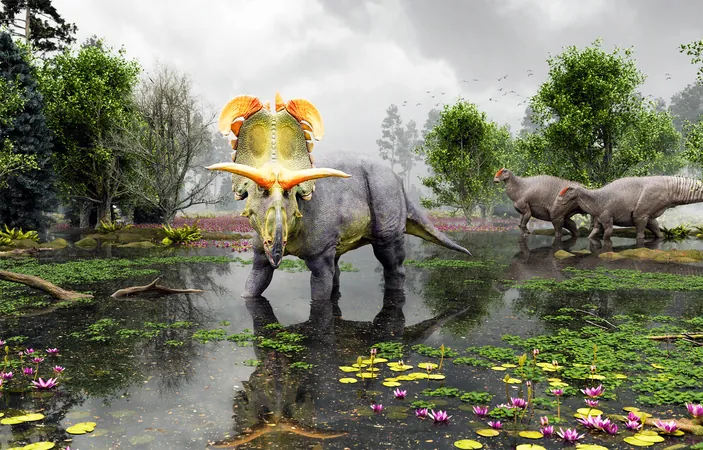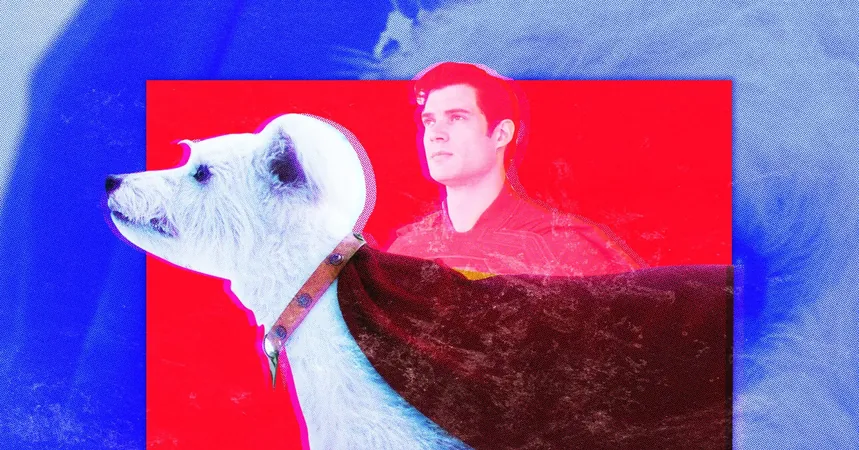
Meet Lokiceratops: The Most Ornate and Largest Horned Dinosaur Ever Discovered!
2025-05-30
Author: Kai
A Stunning New Discoveries from the Past
Paleontologists have unveiled a jaw-dropping new species known as Lokiceratops, a horned behemoth from the Late Cretaceous era. This magnificent dinosaur, which roamed the Earth an astonishing 78 million years ago, is characterized by its spectacular frill and unique, twisted horns that must have captured attention in its lush habitat.
Unearthing the Secrets of the Past
For years, deciphering the relationships among horned dinosaurs has been a challenge due to uneven fossil beds. However, a remarkable partial skull found in northern Montana is reshaping the narrative. This unique ceratopsian fossil hints that the dinosaur communities were much more diverse and complex than previously thought.
The Mystery of Lokiceratops
Paleontologists Mark Loewen from the Natural History Museum of Utah and Joseph Sertich from the Smithsonian Tropical Research Institute painstakingly assembled the skull from numerous fragments. Once completed, they realized they had discovered something unprecedented.
In homage to Norse mythology, they named the new species Lokiceratops rangiformis, which means "Loki's horned face resembling a caribou."
A Remarkable Community of Giants
Lokiceratops wasn’t alone; it shared its environment with four other horned species, creating a bustling neighborhood. Finding so many closely related dinosaurs in a single rock layer is incredibly rare, akin to spotting five different modern rhinoceroses in one valley.
Meet the Heavyweight Champion
At about 22 feet long and weighing nearly 11,000 pounds, Lokiceratops claims the title of the heavyweight champion among North American centrosaurines. Its imposing frill is adorned with sweeping, blade-like spikes and asymmetrical horns that resemble crooked antlers, setting it apart from its relatives who typically feature short nose horns.
This striking appearance emphasizes the evolutionary importance of horned dinosaurs, where flamboyant displays likely played a key role in their survival and diversity during the Cretaceous period.
Social Signals in the Dinosaur Kingdom
The largest frill horns ever recorded in a ceratopsian belong to Lokiceratops. Sertich likens their function to that of peacocks, suggesting they were used for attracting mates and establishing species recognition.
A Snapshot of Evolutionary Diversity
Despite their imposing size, fossils suggest these animals were somewhat sedentary, remaining close to their home territories. The shifting climate along the ancient Western Interior Seaway likely produced distinct plant communities over short distances, leading to a rich diversity among local populations.
Expanding the Ceratopsian Family Tree
This discovery enriches our understanding of the ceratopsian family tree, revealing new relationships among species. Lokiceratops joins its northern relatives, while southern cousins took different evolutionary paths. However, as time progressed, distinct features faded, leading to a more uniform fauna.
Why Lokiceratops Matters Today
Every new fossil, including Lokiceratops, offers insight into how evolution shapes anatomy under various pressures. This find illustrates the significance of social displays in influencing diversity among these colossal creatures. It also serves as a reminder that diversity existed in tightly-knit communities long before the famous herds of Triceratops.
Thanks to its preservation in a museum, this discovery will allow researchers worldwide to study its anatomy, while visitors can behold the grandeur of a creature that turned its extravagant appearances into an art form. After all, vanity is a timeless trait!
Continuing the Exploration of the Past
Published in the journal PeerJ, this study opens new doors to understanding the evolutionary history of horned dinosaurs. With many more species likely waiting to be discovered, Lokiceratops is just one of the fascinating pieces in the puzzle of our planet's distant past.




 Brasil (PT)
Brasil (PT)
 Canada (EN)
Canada (EN)
 Chile (ES)
Chile (ES)
 Česko (CS)
Česko (CS)
 대한민국 (KO)
대한민국 (KO)
 España (ES)
España (ES)
 France (FR)
France (FR)
 Hong Kong (EN)
Hong Kong (EN)
 Italia (IT)
Italia (IT)
 日本 (JA)
日本 (JA)
 Magyarország (HU)
Magyarország (HU)
 Norge (NO)
Norge (NO)
 Polska (PL)
Polska (PL)
 Schweiz (DE)
Schweiz (DE)
 Singapore (EN)
Singapore (EN)
 Sverige (SV)
Sverige (SV)
 Suomi (FI)
Suomi (FI)
 Türkiye (TR)
Türkiye (TR)
 الإمارات العربية المتحدة (AR)
الإمارات العربية المتحدة (AR)